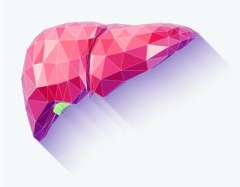Liver Disease
Researchers seek to better characterize hepatotoxicity, treat fatty liver, and improve quality of life for patients
As the first line of defense responsible for clearing chemicals ingested in the human body, the liver is being put to the test at a time when the population is increasingly consuming supplements for purposes ranging from losing weight and enhancing strength to getting an energy boost, or simply improving their health through “natural” means. Unfortunately, this is leading to a growing number of cases in which patients are presenting with acute hepatotoxicity.
UCLA Hepatology currently has funding from the National Institutes of Health (NIH) to study drug-induced liver injury, particularly as a result of supplements. Research shows a significant increase in these injuries, most commonly from workout-related supplements and fat burners.
Drug-induced liver injury is the most common cause of acute failure. It is estimated that more than half of the U.S. population takes supplements, which has led to increasing concerns about liver injury. Another common cause is acetaminophen overdose. While initial attention, particularly in Europe, centered on uses of the drug for suicide attempts, the focus has now shifted to the problem of unintentional overdose — so-called therapeutic misadventures. Antibiotics and anti-seizure medications can also cause liver injury.
Colleagues are also participating in a multicenter clinical trial of the drug obeticholic acid for the treatment of non-alcoholic fatty liver disease, or non-alcoholic steatohepatitis (NASH). With the obesity epidemic, nearly 30 percent of the population has fatty liver, and some of those patients will progress to cirrhosis and liver cancer. This is a major public health problem - leading to more transplants from fatty liver than from problems caused by alcohol — and there is still no effective treatment.

Elsewhere in the division, Dr. Steven-Huy Han, a professor of medicine, is tackling another major public health concern, involving the treatment of chronic hepatitis B. The guidelines for who should be treated and for how long vary widely not only between Europe, Asia and the United States, but even across different geographical regions of the United States. Hepatitis B produces no symptoms, but if untreated it can cause cirrhosis of the liver, liver failure, and eventually liver cancer. Dr. Han, who has headed multiple clinical studies involving the treatment of chronic hepatitis B as well as hepatitis C, is interested in contributing to more standardized treatment protocols.
Given the trends in liver disease, it is becoming increasingly important to identify ways to improve the quality of life for patients who are experiencing liver disease complications. That is the focus of Dr. Sammy Saab, a professor in the division. Dr. Saab’s group is studying various liver complications, as well as the impact of hepatitis C therapy and accessibility, in an effort to identify the best ways to intervene to improve patients’ quality of life and sense of wellbeing.
“Often, patients don’t associate problems they’re experiencing with the liver, even though it’s affecting their quality of life — for example, they might describe leg cramps that feel like a knife ripping through their calves, without recognizing that this could be a reflection of excessive diuretics or electrolyte disturbances,” Dr. Saab notes. “And doctors don’t always ask questions that might identify a problem that could be addressed. One of our goals is to empower patients with more knowledge of what the liver does and what happens when it isn’t working well.”
Dr. Saab notes that people with liver cirrhosis are at risk for complications that can include water retention and confusion, as well as symptoms of fatigue, itchy skin and leg cramps. His group is studying the frequency with which these symptoms occur and how they affect patients’ daily activities.
With the high rates of obesity, diabetes, hypertension and hyperlipidemia, the incidence of fatty liver is expected to continue to rise in the U.S. “Many of us are seeing more and more patients coming to us with cirrhosis — not just from alcohol or hepatitis C, but the big gorilla in the room is fatty liver,” Dr. Saab says. “A small proportion of people with fatty liver will develop cirrhosis, but even a small percentage from this large group of patients will mean many more people will eventually need a liver transplant. The wait for liver transplantation is quite long, and so we need to find better ways to assist patients who are experiencing cirrhosis so that they can live with it as well as possible.”